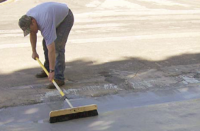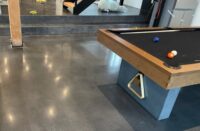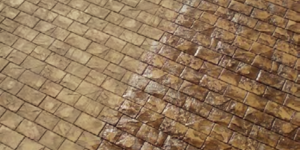
I was called out to a project recently where the homeowner was “underwhelmed,” to say the least. The customers had moved to a new state where they were building a house in a small community and were looking forward to spending many years in their new home “away from the rat race.” They had sought out a custom homebuilder to make it all happen.
My first impression upon meeting the homeowners were that they thought their homebuilder “could do no wrong.” He had worked with them for many months and had built a solid relationship, from the conceptual and design phases all the way through to home construction and completion.
The homebuilder has a solid reputation in the custom home building market, a reputation he has built, crafted and refined over many years. Specializing in custom home building and natural landscapes, he has an artistic eye and knows what will look good in almost every circumstance. Their house was to be on display in the local parade of homes’ show.
What this homebuilder is not, however, is a concrete contractor. So, while he knows what will look good, he must rely on others to execute his vision when it comes to hardscape features such as driveways, patios, steps and planter walls. This is where our story begins to head south.
Over-promised and underdelivered makes for unhappy customers
I was asked to visit the project to ascertain why the concrete didn’t turn out the way they had anticipated and to explain why the concrete wasn’t performing as they expected. “We were told this concrete would-be maintenance-free and we paid extra for that,” the homeowners told me. “We were told by adding color, this concrete would be maintenance-free.”
Within five minutes of meeting the very nice, yet disappointed, homeowners, I heard these clearly not-met statements of expectations. This custom home was set up on a hill with beautiful vistas of the surrounding topography. The home itself was well-constructed and beautifully appointed with landscaping that matched the natural surroundings to a “T.”
The new homeowners had moved from a warm, dry climate to a state that experiences extreme swings in weather, from hot and dry in the summer to snow, ice and freeze-thaw conditions in the winter. The new homeowners had several “must-haves”— namely “shiners” (picture frames) and no sealer. They insisted that the concrete be finished with “shiners” around the joints (a feature popular in their home state but less practical in their new one because of slipperiness in freeze-thaw conditions) and a light broom finish everywhere else.
They didn’t want any sealer because they weren’t looking for color “pop” and felt it would also make the concrete more slippery when wet. The homebuilder suggested using a natural earth tone integral color to match the surrounding mountains and hills.

The best laid plan
The color selected looked great in the brochure. The execution of the plan left a lot to be desired. Let’s start from the beginning.
It was late December. The color selected was a low percentage pigment loading, meaning there was very little margin for error as it relates to consistency in slump, added water at the job site and multiple pours. Three concrete trucks were used over two days, the last truck providing a 1.5 yard “clean-up” load of colored concrete that now sticks out like a sore thumb.
Most manufacturers of colored concrete pigment recommend a two-yard minimum when using integrally colored concrete to maintain color consistency. They also warn of the pitfalls that can occur when pouring colored concrete over multiple days and at different times of the day. This portion of the project became problematic from the outset.
It was cold, dry and there was a prevailing wind in the area. The concrete was broom finished wet in some places and looks as though it was difficult to close in others. Where groovers were used for the shiners, there are deep tool lines on the edges, as well as places where the concrete was not troweled closed at all. Spider-web cracking is evident over a large section of the pour because of rapid moisture loss at the surface during the finishing stage and the lack of using a true finishing aid.

Avoid this predicament
Six months later, there are areas that have peeled-scaled. It’s evident where each of the three separate concrete pours were and the overall look is not what was expected by the homeowner at all.
How could this situation have been avoided?
Start with a preconstruction meeting. In this case, the homebuilder, his concrete subcontractor and the ready-mix producer should have met together and with the homeowner to discuss requirements, expectations and expected workmanship.
The concrete contractor should have done some research to better understand the importance of sealing concrete in tough environments. The homeowners didn’t want to seal the concrete because they felt it would be too slippery. While this may be a valid concern, they also didn’t want the color to “pop.” Had the concrete contractor done some research he would have found that there are multiple manufacturers who make penetrating sealers that help protect against the elements and freeze/thaw. A sealer could have been applied without impacting the color or the friction-level coefficient of slipperiness.
Under-promise and overdeliver. A lot more communicating by all parties concerned and a little less making assertions that concrete can become maintenance-free would have gone a long way. The owners may have been seeking low-maintenance concrete but were obviously left with the impression that their concrete would be maintenance-free.
One for all, all for one
When called after the fact to a job site meeting in a situation like this, make sure all parties are represented in the meeting so there can be no misunderstanding or mistake about what is discussed and what actionable items are decided upon.
I was shocked when the ready-mix producer and I arrived for this meeting and the homebuilder and his concrete contractor weren’t present. We all lose in this situation. The homeowner feels abandoned and the decorative concrete industry gets a black eye.
Remember, decorative concrete done well is free advertising, but done poorly, it becomes a black mark on our industry.
















